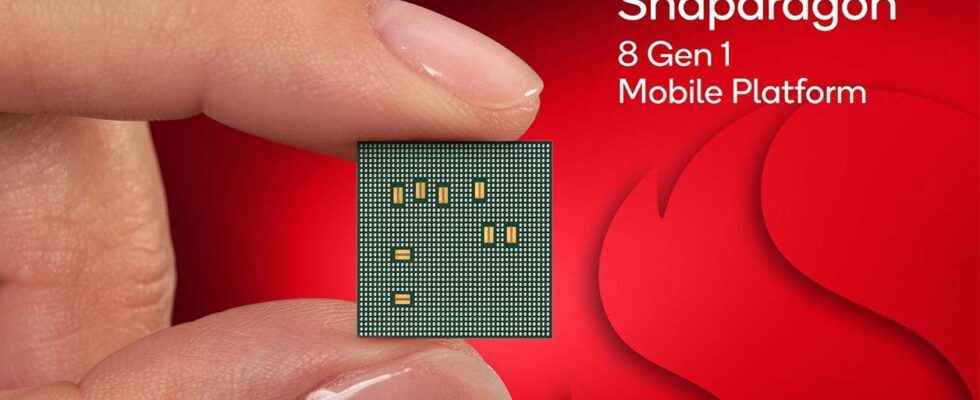After the Snapdragon 865 and the Snapdragon 888, here is the Snapdragon 8 Gen 1. If it seems obvious that Qualcomm has somewhat lost control over the naming of its chips over the years, this change in nomenclature should have the merit of simplifying the founder’s offer.
We imagine that the successor to the Snapdragon 8 Gen 1 will be the Snapdragon 8 Gen 2 (this nomenclature has already been used for 8cx, Qualcomm chips for PC) and that, conversely, mid / entry-level chips will now be recognized by their smaller numbers (Snapdragon 4, Snapdragon 6, Snapdragon 7, etc.).
High-end chip obliges, it is obviously the power that is in the spotlight of this Snapdragon 8 Gen 1. Pending our more complete analysis of the new Qualcomm chip, here is already some initial information on its novelties.
The first processor engraved in 4 nm
Unsurprisingly, Qualcomm does not change its winning formula. Like the founder’s previous high-end SoCs, the Snapdragon 8 Gen 1 is equipped with one high-performance core, three performance cores and four low-power cores.
Obviously, these cores are all evolutions of those present in the Snapdragon 888, and are especially the first steps of the ARMv9 platform, presented last March and further detailed the following May. A platform which is intended to mark the evolution of SoC ARMs for the next ten years.
We go from Cortex-X1 at 2.84 GHz to Cortex-X2 at 3 GHz (high performance), from the Cortex-A78 at 2.42 GHz to Cortex-A710 at 2.5 GHz (performance) and the Cortex-A55 at 1.8 GHz at Cortex-A510 at 1.8 GHz (low consumption).
The whole thing should offer 20% better performance than the previous generation according to Qualcomm, which we can not wait to check when the first smartphones equipped with the Snapdragon 888 are available. Xiaomi has already announced that it will be the first with its Xiaomi 12.
Thanks to an engraving process in 4 nm rather than 5 (a first!), Qualcomm announces that its new chip uses 30% less energy. Luckily, that was precisely one of the major flaws of the Snapdragon 888. Will Qualcomm catch up with the Apple Silicon chips? We can only wish it for the Android universe.
On the GPU side, the new generation of Adreno should offer 30% more power, despite a 25% reduction in power consumption, according to Qualcomm.
Here again, we will have to check. The Snapdragon 8 Gen 1 is also equipped with a 7th generation NPU which, according to Qualcomm, doubles the performance and consumes 70% less. Its 5G modem, the X65, is expected to reach 10 Gbits / s.
Also to discover in video:
A camera always on
Capable of photo / video wonders (3.2 Gigapixels per second, 8K HDR, adding real-time bokeh), the Snapdragon 8 Gen 1 is the first SoC with an 18-bit ISP, which should allow it to capture photos over a greater dynamic range.
It is also necessary that the manufacturers do not add silly filters degrading the realism of the colors. The Snapdragon 8 Gen 1’s ISP can use three sensors simultaneously, which theoretically allows filming with the front camera, ultra-wide-angle, and main sensor at the same time. Once again, everything will depend on the manufacturers.
One of the other intriguing novelties of this new generation is the possibility for a manufacturer to activate the front camera permanently, not to spy on the user but to know if he is still there. Without excessive power consumption, this process would improve the speed of facial recognition and allow the screen to turn off if you are not in front of your smartphone.
The Snapdragon 8 Gen 1 should equip a very large number of high-end smartphones in 2022 … if the shortage of components does not put the batons in the wheels of manufacturers. We’ll come back to Qualcomm’s announcements in detail in the next few hours.
